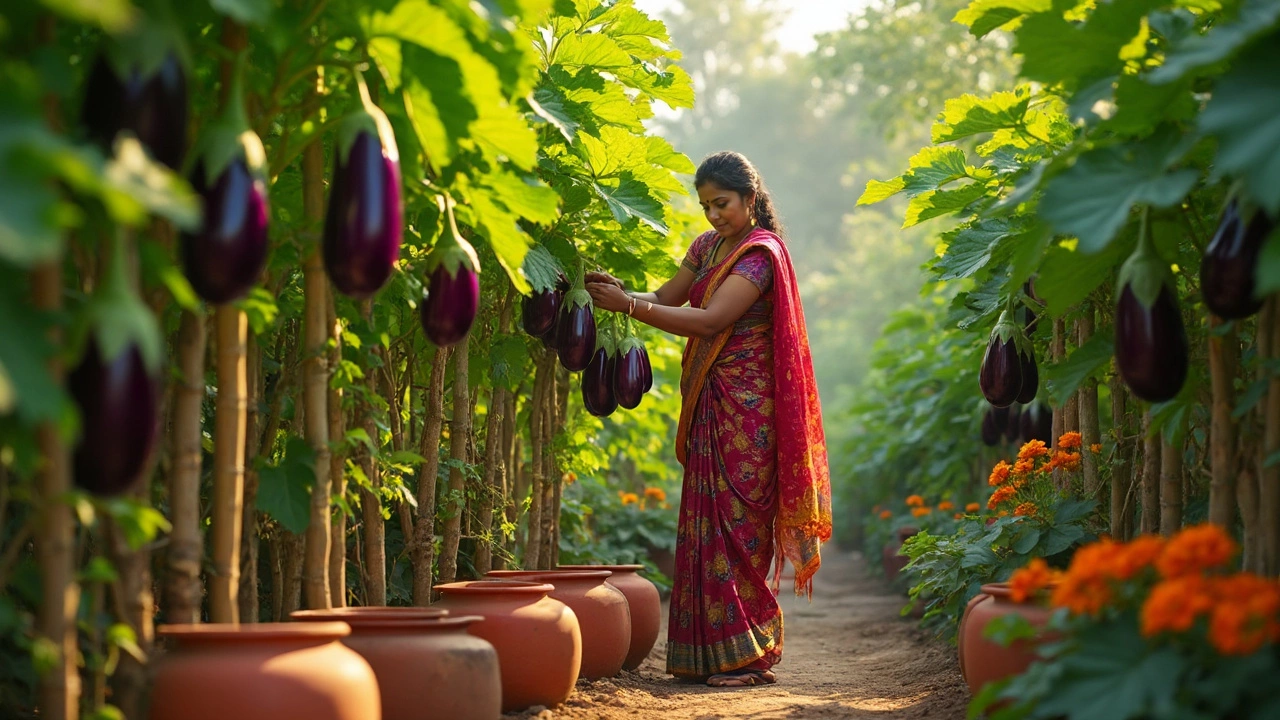Brinjal, or eggplant, grows in every corner of Indian kitchens, but is it actually good for you? This article breaks down the health benefits and possible downsides of brinjal, from its nutrition facts to the concerns people rarely talk about. Get tips on choosing and growing brinjal, plus fun facts you probably didn't know. Discover how this versatile veggie fits into Indian diets and whether you should eat it more often or watch out for anything. Straight facts, no fluff—just everything you need to know about brinjal.
Eggplant: Grow, Care, and Harvest This Popular Indian Vegetable
When you think of eggplant, a versatile, purple-skinned vegetable widely grown across India’s kitchens and farms. Also known as brinjal, it’s a staple in curries, stir-fries, and pickles, thriving in warm climates and demanding little beyond good soil and consistent water. Unlike many crops that need perfect conditions, eggplant is tough, forgiving, and rewards attention with heavy yields—even in small spaces like balconies or kitchen gardens.
What makes eggplant special isn’t just its flavor—it’s how well it fits into Indian farming habits. It grows fast, resists pests better than tomatoes, and doesn’t need huge plots. Farmers in Tamil Nadu, Maharashtra, and Uttar Pradesh rely on it for both home use and market sales. You’ll find it in nearly every native Indian vegetable, a group of crops that have been cultivated here for centuries and are perfectly adapted to local weather. Eggplant thrives in the same heat and monsoon patterns that define India’s growing seasons. It’s not imported, not exotic—it’s homegrown wisdom in a purple fruit.
But growing eggplant well? That’s where most gardeners stumble. Too much water? Roots rot. Too little sun? No fruit. Wrong soil? Bitter, misshapen eggplants. You need the right mix—loose, compost-rich soil, at least six hours of direct sun, and careful spacing. Companion planting helps too. Growing it near basil or marigolds cuts down on pests naturally. And yes, you can grow it in pots if your balcony gets morning light. The key is observation: check leaves daily, pinch off early flowers if the plant looks weak, and never let the soil dry out completely.
It’s not just about planting and waiting. Eggplant needs support as it grows—stake it early to keep fruit off the ground. Harvest when the skin is shiny and firm; if it turns dull, it’s overripe and bitter. Most varieties in India mature in 60 to 80 days, making it one of the faster producers in your garden. And unlike some crops that vanish after one season, eggplant can keep producing for months if you keep feeding it and pruning lightly.
You’ll find tips on soil prep, pest control, and pruning in the posts below. Some cover how to fix yellowing leaves, others show how to grow eggplant in containers or deal with fruit borers without chemicals. There’s even a guide on which Indian native vegetables pair best with eggplant in rotation. Whether you’re a balcony gardener with one pot or a small farmer with a field, the advice here is real, tested, and made for India’s climate. No theory. No fluff. Just what works.
Curious why a fruit holds the title 'queen of vegetables' in India? This article digs into the story behind the eggplant, also called brinjal, and its unique spot in vegetable gardening. You'll find practical advice on growing it at home, discover some lesser-known facts, and get tips to make your brinjal patch thrive. If you want to level up your kitchen garden, this guide will come in handy. Expect clear answers and real, useful tricks anyone can follow.

